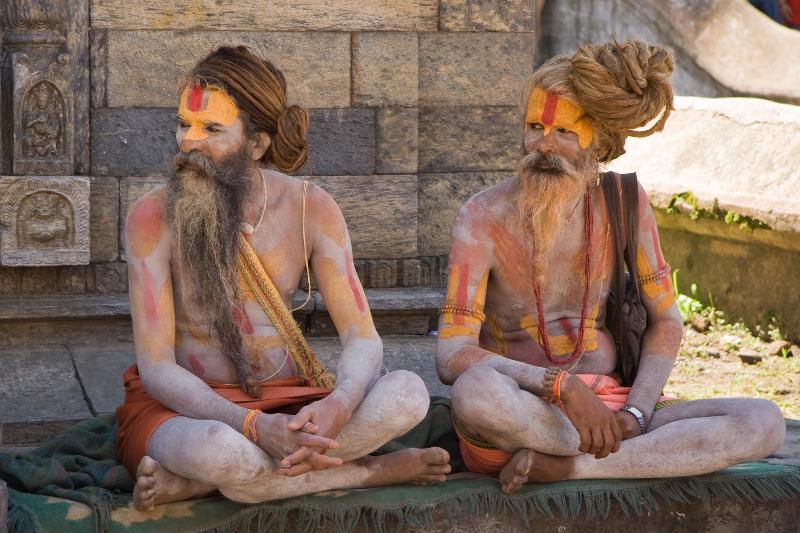RELG 402 - World's Living Religions
Hinduism
Images in the text are linked to larger photos - click on them to see the larger pictures.
Hover the mouse over the images to see their captions.
Hinduism is one of the most ancient religions, dating back more than 5,000 years. It grew out of the combination of the indigenous religions of India with the Aryan religions brought to India around 1,500 B.C. They were recorded in the Veda and the Upanishads, the sacred scriptures of Hinduism.
The Aryan invasion of India influenced the development of the "caste system", into which people are born, and cannot leave, a particular subgroup that determines their religious, social, and work-related duties. There are four main castes : the Brahmins or priests, the rulers and warriors, the farmers and merchants, and the peasants and laborers. Each group in society (varna) has its own dharma or duties which must be followed.
Hinduism reflects the existence of a single God manifest in hundreds of forms. Although individual Hindus may worship various gods and goddesses, the basic tenet of Hinduism is that the many gods and goddesses are all facets of one supreme God, called Brahman. Brahman has many forms and pervades the whole universe. Most Hindus believe that Brahman is present in every person as the eternal spirit or soul, called the atman.
Brahman (note the spelling - with an "n" on the end) may be used by monistic Hindus (those who believe that all reality is ultimately one) to denote the divine reality - which they understand to be the supreme unitary reality which is the source of all being and the source of all knowing.
Dualistic Hindus (those who understand the divine reality as being separate from the rest of reality) may use the term Brahman to denote a universal being who encompasses all the various deities worshiped by Hindus.
So all the Hindu gods and goddesses may be seen as various powers or manifestations of the one "ground of all Being".
Brahman may also be understood as the true nature of all that exists, but it can only be described by general attributes - it is infinite being, infinite awareness, infinite bliss.
So Hindus may understand God to be simultaneously One (Brahman, the Ground of all Being) and many (the deities which are worshiped, and are manifestations of Brahman).
Hindu deities
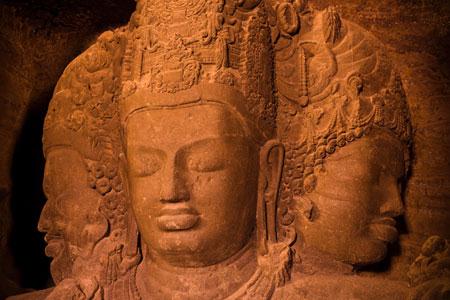 There are three main aspects of Brahman, which are expressed as a trinity, called Trimurti. They are Brahma, the creator; Vishnu, the preserver; and Shiva, the destroyer. These manifestations represent the cyclical nature of the universe.
There are three main aspects of Brahman, which are expressed as a trinity, called Trimurti. They are Brahma, the creator; Vishnu, the preserver; and Shiva, the destroyer. These manifestations represent the cyclical nature of the universe.
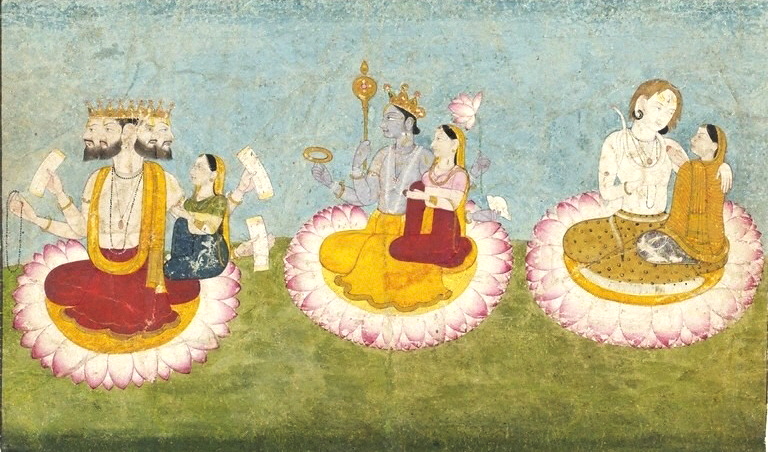 There are many thousands of lesser gods and goddesses in Hinduism. These are all ways of understanding aspects of the one God called Brahman.
There are many thousands of lesser gods and goddesses in Hinduism. These are all ways of understanding aspects of the one God called Brahman.
Hindu deities are called Deva (male) or Devi (female).
In the Vedic period they represented forces of nature (fire, wind, etc.) or moral values (courage, honesty). The three main deities in the Rig Veda were Indra, Agni (fire), and Soma (also identified as a plant, and a drink made from the juice of the plant, which was believed to grant immortality, and caused hallucinations.)
Over time an extensive literature developed, including the Puranas, with genealogies and stories of the various deities, who developed distinctive attributes and personalities.
![]()
Scriptures
Hinduism has a large number sacred writings, many of which were originally written in sanskrit (the sacred ancient language of the Hindu scriptures).
The Hindu sacred texts are respected by Hindus but they are not read and studied in the same way as the sacred texts of some other religions are studied by their followers.
There are two kinds of text:
- Sruti, "that which is heard" - revelation from a deity. This includes the Vedas, the oldest and most important of the Hindu sacred writings. They were communicated by the deities and were "heard" by rishis (wise men), and have been repeated from one generation to the next for thousands of years. The Vedas consist of chants, hymns, myths, prayers and songs. They contain stories of the gods, and deal with questions such as: How did the world come into existence? Can people achieve immortality?, What is wisdom?
- Smriti, "that which is remembered" - human wisdom and tradition. This includes the Puranas (stories of Hinduism), the Ramayana (the story of Prince Rama and his wife Sita), and the Mahabharata (the story of the five Pandava princes). The Mahabharata contains the Bhagavad Gita) .
![]()
Worship
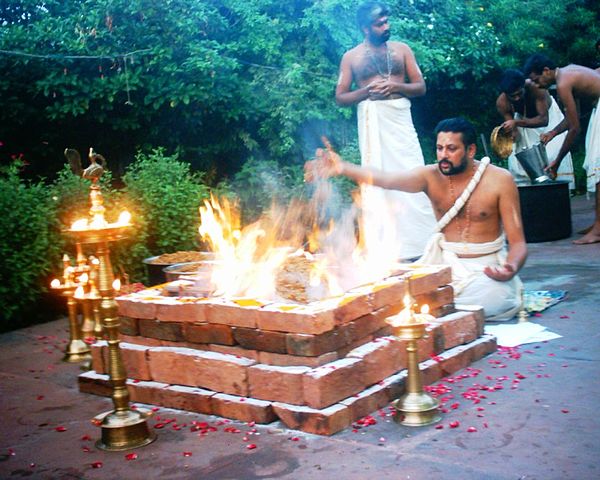
 Acts of worship and devotion are known as puja. There are no obligatory worship services or set prayers which Hindus must perform - everything is left to individual Hindus to decide how, when, and whom they will worship. Puja is usually performed by the individual worshipper alone, though sometimes a priest may assist, and sometimes a group of worshippers will perform Yana (a sacrificial fire ritual) as a group.
Acts of worship and devotion are known as puja. There are no obligatory worship services or set prayers which Hindus must perform - everything is left to individual Hindus to decide how, when, and whom they will worship. Puja is usually performed by the individual worshipper alone, though sometimes a priest may assist, and sometimes a group of worshippers will perform Yana (a sacrificial fire ritual) as a group.
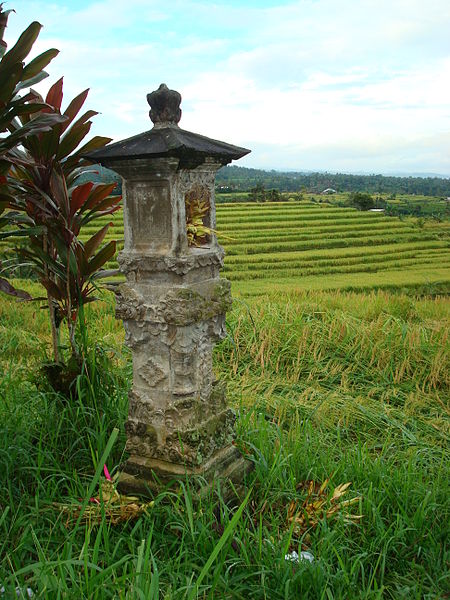
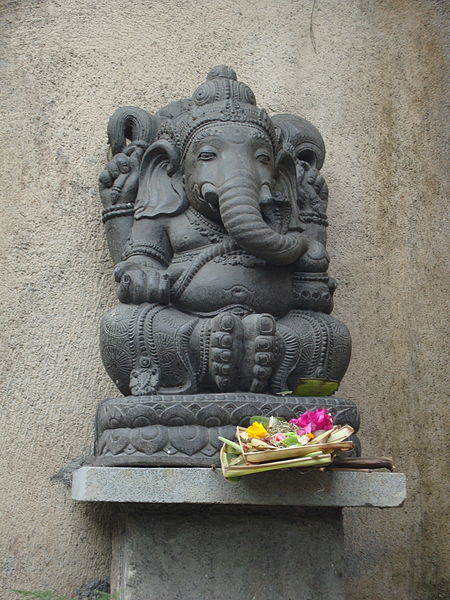 A murti is the representation of a deity, which is regarded as being inhabited by the deity. It is usually a statue of a deity. It is regarded as a manifestation of the deity. Although it is an object of worship it is recognized as not being the deity itself, but a place in which the deity may choose to reside. An image of a deity is a symbolic representation meant to aid contemplation of the deity's divine attributes. The image is also believed to be suffused with the divine presence. So the deity becomes accessible to the worshiper, and for a Hindu, an image of a god is God. The image is imbued with the divine essence, and it is the divine essence that is worshiped or invoked by the ritual actions of the worshiper.
A murti is the representation of a deity, which is regarded as being inhabited by the deity. It is usually a statue of a deity. It is regarded as a manifestation of the deity. Although it is an object of worship it is recognized as not being the deity itself, but a place in which the deity may choose to reside. An image of a deity is a symbolic representation meant to aid contemplation of the deity's divine attributes. The image is also believed to be suffused with the divine presence. So the deity becomes accessible to the worshiper, and for a Hindu, an image of a god is God. The image is imbued with the divine essence, and it is the divine essence that is worshiped or invoked by the ritual actions of the worshiper.
The postures, expressions, gestures, clothing, and things held by the figure are dictated by a long tradition of Hindu religious art. The many arms which are shown in some depictions represent the actions of the deity - they do not mean that the deity was believed to have multiple arms.

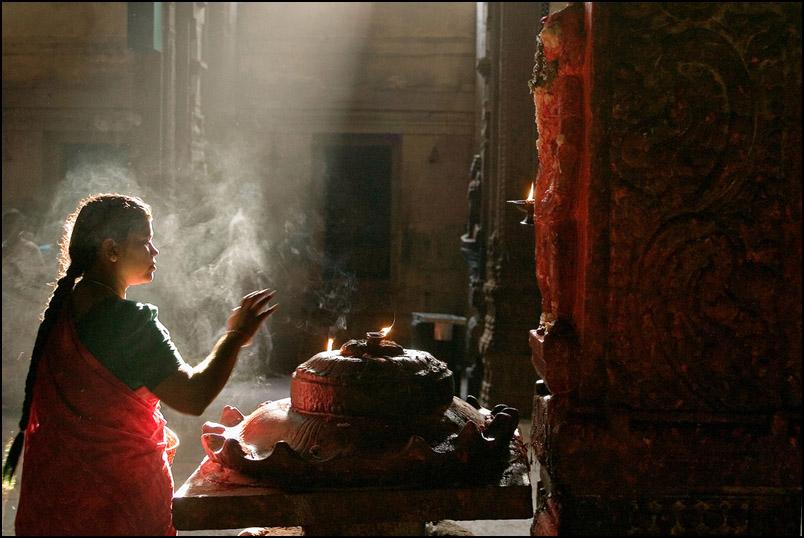 Puja before a murti may be elaborate in large temples, or be a simple song or mantra spoken at shrine in a home. Milk may be poured over the murti as an anointing and offering. In some temples pujas may take place daily, or may be only occasional. Puja is seen as an act of hospitality towards the deity of the worshipper's choice. The deity is treated as an honored guest - invited, praised, offered food and entertainment, and shown love and respect.
Puja before a murti may be elaborate in large temples, or be a simple song or mantra spoken at shrine in a home. Milk may be poured over the murti as an anointing and offering. In some temples pujas may take place daily, or may be only occasional. Puja is seen as an act of hospitality towards the deity of the worshipper's choice. The deity is treated as an honored guest - invited, praised, offered food and entertainment, and shown love and respect.
Puja typically consists of inviting the deity to attend the ceremony, offering water for washing, clothing the murti of the deity and adding ornaments to it, applying perfumes, ointments, or sandalwood paste to the murti, offering flowers or adorning the murti with garlands of flowers, burning incense, waving a lamp in front of the murti, offering foods such as rice, fruit, butter, bowing or prostrating oneself before the murti, walking around the murti, and saying good0bye to the deity.
Puja may also be an offering made to natural forces, such as the sunrise or at a river or tree. Food offered to a deity is regarded as blessed, and may be shared by all who took part in the puja.
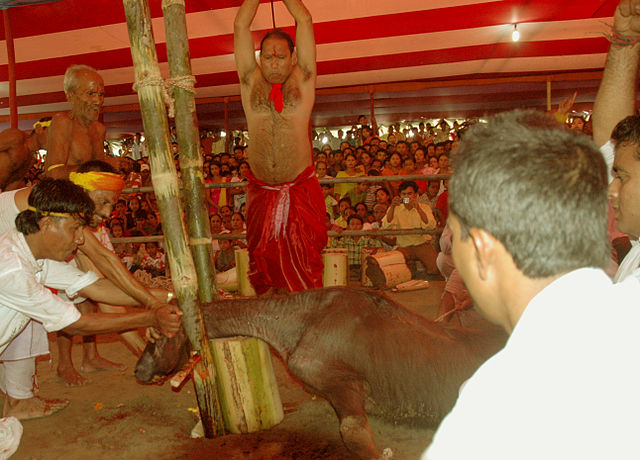 Animal sacrifice, particularly to Durga, is still practiced.
Animal sacrifice, particularly to Durga, is still practiced.
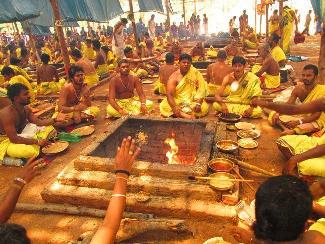 Sacrifice with fire dates back to Vedic times, and is called yajna. Originally, Yajna was performed by groups of priests, but by 500 BC it had evolved to include ritual actions by lay people. Objects may be thrown or put into the fire as an offering to the deity, or vows and prayers may be performed in the presence of the sacred fire. Hindu weddings often involve the exchange of vows in front of a sacred fire, or seven steps by the bride and groom around a sacred fire.
Sacrifice with fire dates back to Vedic times, and is called yajna. Originally, Yajna was performed by groups of priests, but by 500 BC it had evolved to include ritual actions by lay people. Objects may be thrown or put into the fire as an offering to the deity, or vows and prayers may be performed in the presence of the sacred fire. Hindu weddings often involve the exchange of vows in front of a sacred fire, or seven steps by the bride and groom around a sacred fire.
![]()
Dance
Various deities are worshipped at shrines and temples, and dance is an important part of worship.
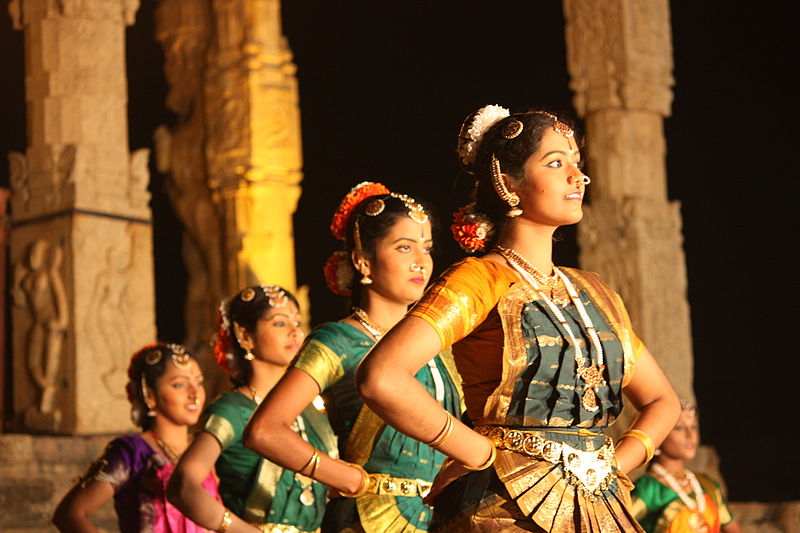 Hindu deities are treated as revered royal guests in their temples or shrines, to be offered the "sixteen hospitalities" - among which are music and dance, pleasing to the senses.
Hindu deities are treated as revered royal guests in their temples or shrines, to be offered the "sixteen hospitalities" - among which are music and dance, pleasing to the senses.
The early origins of Temple Dance are shown by the five main dance styles - each one dedicated to one of the elemental gods of the Vedic period - Fire, Water, Earth, Air, Sky.
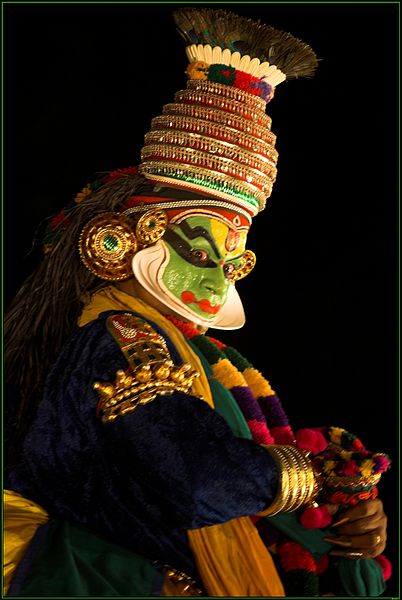 Many Hindu temples kept groups of musicians and dancers who performed publicly in the temple. The dances often portrayed events from the Ramyana or other epics of the gods - this also helped to educate the people in their history and traditions.
Many Hindu temples kept groups of musicians and dancers who performed publicly in the temple. The dances often portrayed events from the Ramyana or other epics of the gods - this also helped to educate the people in their history and traditions.
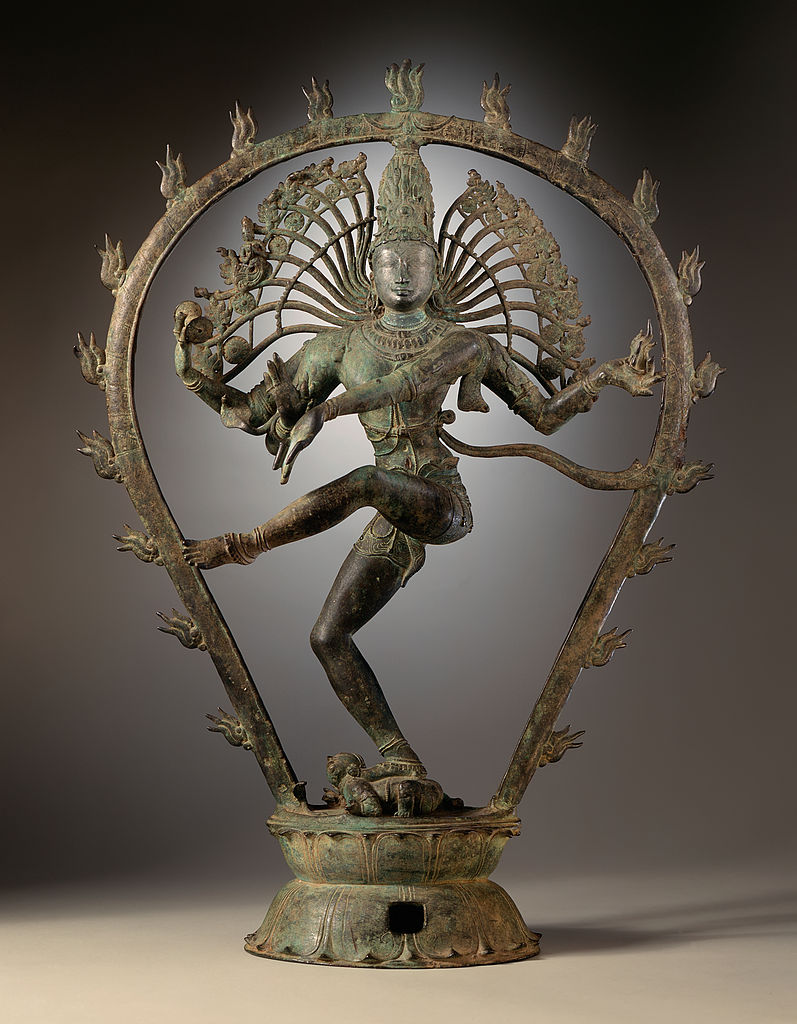 The religious importance of dance to a Hindu is shown in the image of the Cosmic Dance of the universe. The Supreme Dancer, Nataraja, is a name for Shiva as the source of knowledge. He is portrayed in the dance position of "Ananda Tandavam", embodying eternal energy in the Five Activities - Creation, Preservation, Destruction, Concealing, and Bestowing favor. The demon Apasmara purusa (Forgetfulness, Ignorance) lies under his feet.
The religious importance of dance to a Hindu is shown in the image of the Cosmic Dance of the universe. The Supreme Dancer, Nataraja, is a name for Shiva as the source of knowledge. He is portrayed in the dance position of "Ananda Tandavam", embodying eternal energy in the Five Activities - Creation, Preservation, Destruction, Concealing, and Bestowing favor. The demon Apasmara purusa (Forgetfulness, Ignorance) lies under his feet.
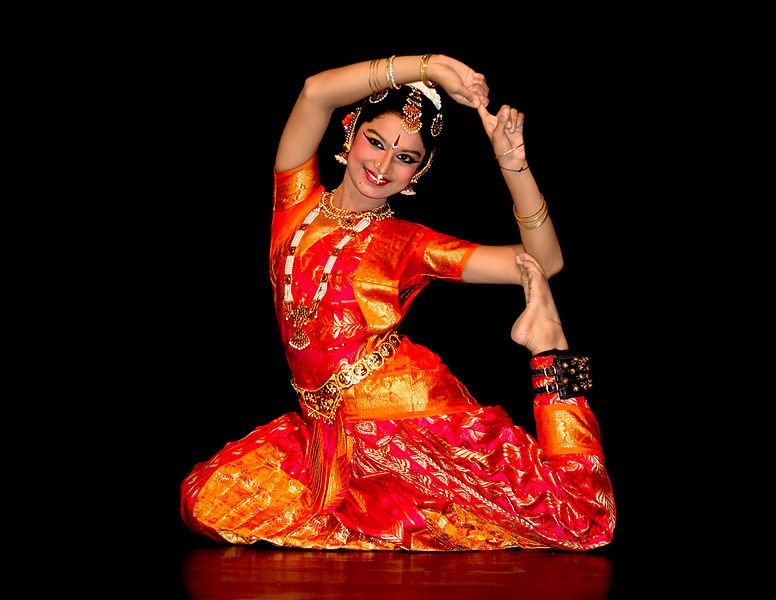 Nowadays dancers wear elaborate costumes which cover most of the body. In earlier times they are portrayed as dancing bare-breasted before the deity.
Nowadays dancers wear elaborate costumes which cover most of the body. In earlier times they are portrayed as dancing bare-breasted before the deity.
![]()
Festivals
There are a number of festivals which take place every year to commemorate various events in the lives of deities, and some, such as the Kumbh Mela which take place less frequently.
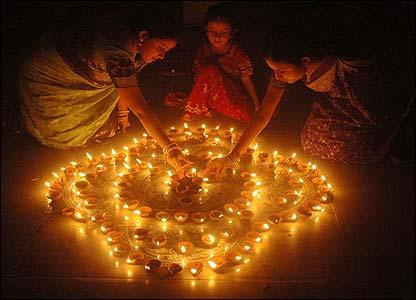
 Diwali or Deepawali, the Festival of Lights, is a festival which commemorates Rama's return as the rightful king of Ayodhya after his 14-year exile and final battle with the demon Ravana, and is a celebration of the victory of right over wrong, light over darkness, knowledge over ignorance, and hope over despair.
Diwali or Deepawali, the Festival of Lights, is a festival which commemorates Rama's return as the rightful king of Ayodhya after his 14-year exile and final battle with the demon Ravana, and is a celebration of the victory of right over wrong, light over darkness, knowledge over ignorance, and hope over despair.
Diwali is also associated with Lakshmi, the consort of Vishnu, the goddess of wealth and prosperity. Different Hindu communities celebrate Diwali at different times in the October/November period, and in different manners.
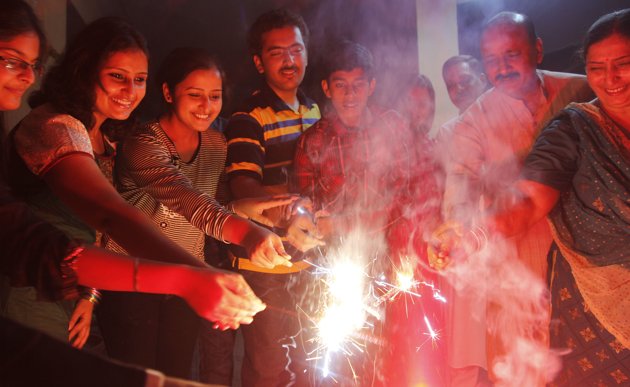
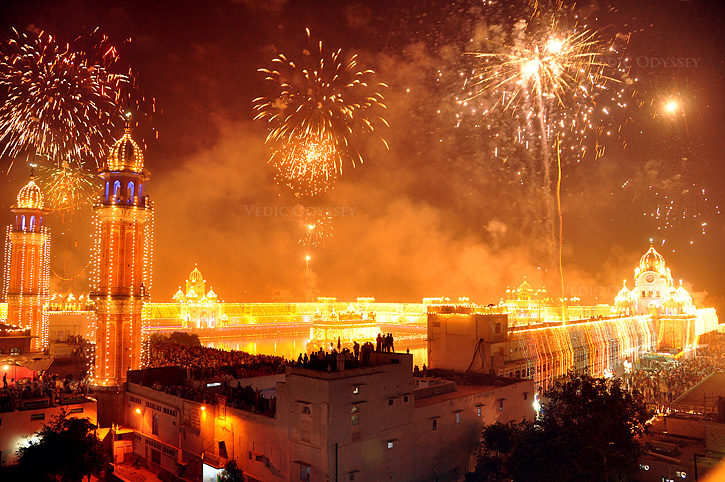 Some communities celebrate the victory of Krishna over the demon Narakasur.
Some communities celebrate the victory of Krishna over the demon Narakasur.
Before the festival, people clean and decorate their homes and offices.
On the night of Divali, people dress in their best clothes or in new clothes, and make family puja to Lakshmi, Ganesha, and/or Saraswati at home, have a family dinner and exchange gifts. Some communities worship Kali or Krishna, rather than Lakshmi.
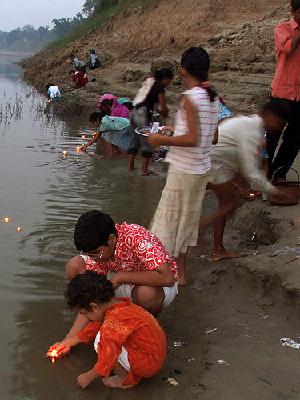 Houses and temples are decorated with little oil lamps and lights, fireworks are set off, lighted lamps are put on little rafts and floated on rivers. An effigy of the demon may be burnt at dawn.
Houses and temples are decorated with little oil lamps and lights, fireworks are set off, lighted lamps are put on little rafts and floated on rivers. An effigy of the demon may be burnt at dawn.
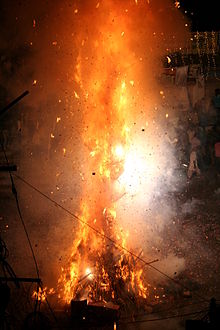
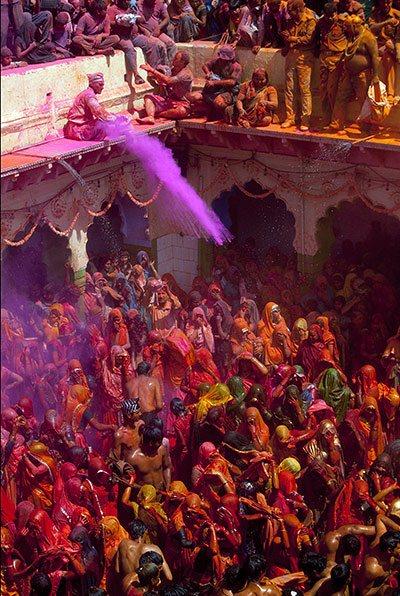 Holi, the Festival of Colors, is a two-day Spring festival in February/March. On the night before the festival, people gather around bonfires and pray that their evil natures should be destroyed in the bonfire. The next day Holi is celebrated as a game, in which participants throw colored water or colored powders or dyes over each other, or smear each other with paints and dyes. They also use water-balloons and water-pistols. Groups of people go through the streets playing musical instruments and drums, singing and dancing. Food and drinks are available, and bhang (cannabis) may be mixed in the drinks as a modern equivalent of soma. Afterwards, people clean themselves up and visit family and friends.
Holi, the Festival of Colors, is a two-day Spring festival in February/March. On the night before the festival, people gather around bonfires and pray that their evil natures should be destroyed in the bonfire. The next day Holi is celebrated as a game, in which participants throw colored water or colored powders or dyes over each other, or smear each other with paints and dyes. They also use water-balloons and water-pistols. Groups of people go through the streets playing musical instruments and drums, singing and dancing. Food and drinks are available, and bhang (cannabis) may be mixed in the drinks as a modern equivalent of soma. Afterwards, people clean themselves up and visit family and friends.
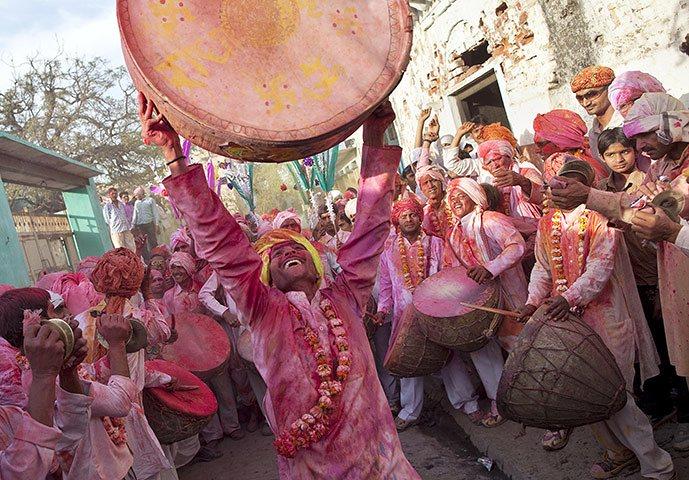
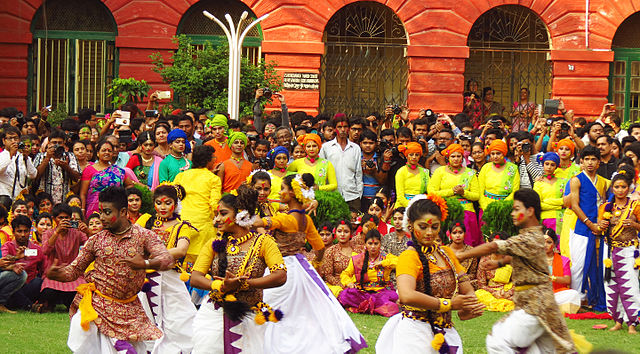 Holi celebrates the arrival of Spring, the victory of good over evil, and is a time when people pay or forgive debts, forgive one another for past wrongs, and renew broken relationships. Holi is linked to a time when a demon king set himself up as a god, and demanded that everyone worship him. His son was a worshipper of Vishnu, and refused to worship the king. The king tried to kill his son by throwing him off a cliff, trampling him with elephants, using snakes to bite him, and ordering his soldiers to kill him. When the king was unsuccessful, he asked his evil sister to kill the boy. She obtained a cloak which would protect the wearer from fire - she wore it, and drew the young prince into a burning pyre. However, in the fire, the prince prayed to Vishnu, and the cloak flew off the evil woman and landed onto the prince, thus destroying her and saving him. The king lost his temper and smashed a sacred pillar, whereupon Vishnu appeared as his avatar Narasimha, killed the king, and made the prince king in place of his father..
Holi celebrates the arrival of Spring, the victory of good over evil, and is a time when people pay or forgive debts, forgive one another for past wrongs, and renew broken relationships. Holi is linked to a time when a demon king set himself up as a god, and demanded that everyone worship him. His son was a worshipper of Vishnu, and refused to worship the king. The king tried to kill his son by throwing him off a cliff, trampling him with elephants, using snakes to bite him, and ordering his soldiers to kill him. When the king was unsuccessful, he asked his evil sister to kill the boy. She obtained a cloak which would protect the wearer from fire - she wore it, and drew the young prince into a burning pyre. However, in the fire, the prince prayed to Vishnu, and the cloak flew off the evil woman and landed onto the prince, thus destroying her and saving him. The king lost his temper and smashed a sacred pillar, whereupon Vishnu appeared as his avatar Narasimha, killed the king, and made the prince king in place of his father..

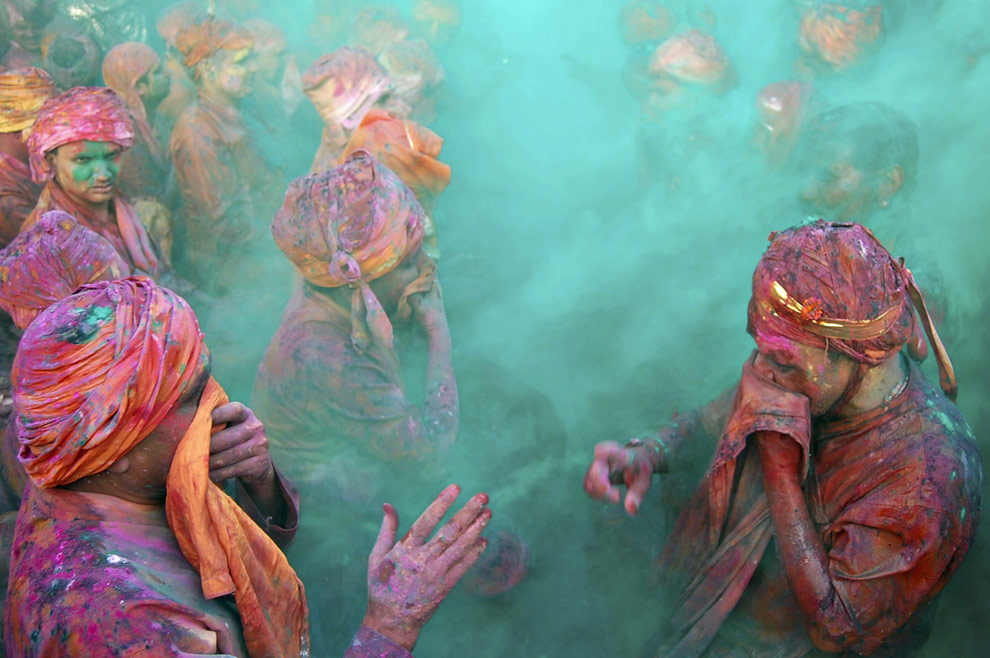 The next day, the pyre had burned down to ash, and the people put the ash on their foreheads - this is the origin of the colored powder which people use at Holi.
The next day, the pyre had burned down to ash, and the people put the ash on their foreheads - this is the origin of the colored powder which people use at Holi.
Another legend connects Holi with the celebration of the death of an evil demon who tried to kill Krishna when he was a child.
Some regions celebrate Holi for 16 days, commemorating the love of Krishna for Radha.
In the Punjab, walls and streets are decorated with drawings and paintings of plants, peacocks, and geometrical patterns.
Navararti, or Dashera is reckoned either as "nine nights" or "ten days". It celebrates the end of the monsoon (rainy) season, and may also commemorate Rama's fight against Ravana or Devi's battle against the buffalo demon. Altars to Devi in her manifestation as Durga are set up
After that, she may be worshiped as Lakshmi, then as Sarasvati.
Then clay images of Durga are paraded through the streets and then dissolved in a river or in the sea.
The last day of the festival is a celebration of Rama's victory over Ravana.
 The Kumbh Mela, or Festival of the Jar, is reckoned to be the largest religious gathering in the world. A kumbha is a pot, and it refers to the pot of amrit carried by Garuda, Vishnu's eagle.
The Kumbh Mela, or Festival of the Jar, is reckoned to be the largest religious gathering in the world. A kumbha is a pot, and it refers to the pot of amrit carried by Garuda, Vishnu's eagle.
 Acording to legend, when the devas (gods) and the asuras (demons) were churning the Ocean of Milk to produce amrit (the elixir of immortality) the asuras tried to grab the amrit. So Garuda flew away with the pot of amrit. In the course of his flight he spilled or poured out drops of the amrit at four places - the places which now hold the Kumbh Mela festivals.
Acording to legend, when the devas (gods) and the asuras (demons) were churning the Ocean of Milk to produce amrit (the elixir of immortality) the asuras tried to grab the amrit. So Garuda flew away with the pot of amrit. In the course of his flight he spilled or poured out drops of the amrit at four places - the places which now hold the Kumbh Mela festivals.
Some communities celebrate the victory of Krishna over the demon Narakasur.
 The primary Kumbh Mela is held at Haridwar, on the banks of the sacred River Ganges, every twelve years - the last one was in 2010, so the next one will be in 2022 or 2023.
The primary Kumbh Mela is held at Haridwar, on the banks of the sacred River Ganges, every twelve years - the last one was in 2010, so the next one will be in 2022 or 2023.
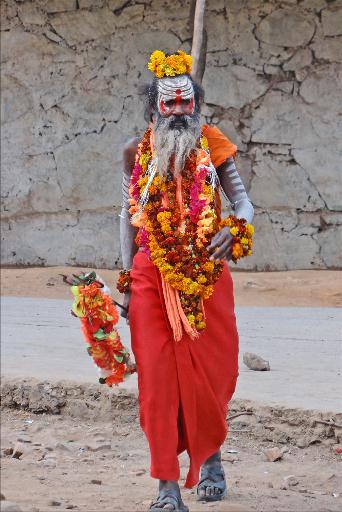 Millions of pilgrims come to the River to bathe and wash away their sins. Hindu sadhus and babas (holy men and ascetics) congregate - in the past there have been massacres and fighting between rival religious groups. Sanitation and crowd-control are major problems - there have been outbreaks of cholera due to lack of sanitation.
Millions of pilgrims come to the River to bathe and wash away their sins. Hindu sadhus and babas (holy men and ascetics) congregate - in the past there have been massacres and fighting between rival religious groups. Sanitation and crowd-control are major problems - there have been outbreaks of cholera due to lack of sanitation.
Three other towns also hold Kumbh Melas, also at 12-year intervals: Nashak and Ujjan hold Kumbh Melas about six years after the Haridwar Kumbh Mela, and Allahabad holds one about three years after the Haridwar Kumbh Mela. The dates for the Kumbh Mela are calculated by Hindu astrology - the Festival takes place when the sun enters Aries and Jupiter is in Aquarius.
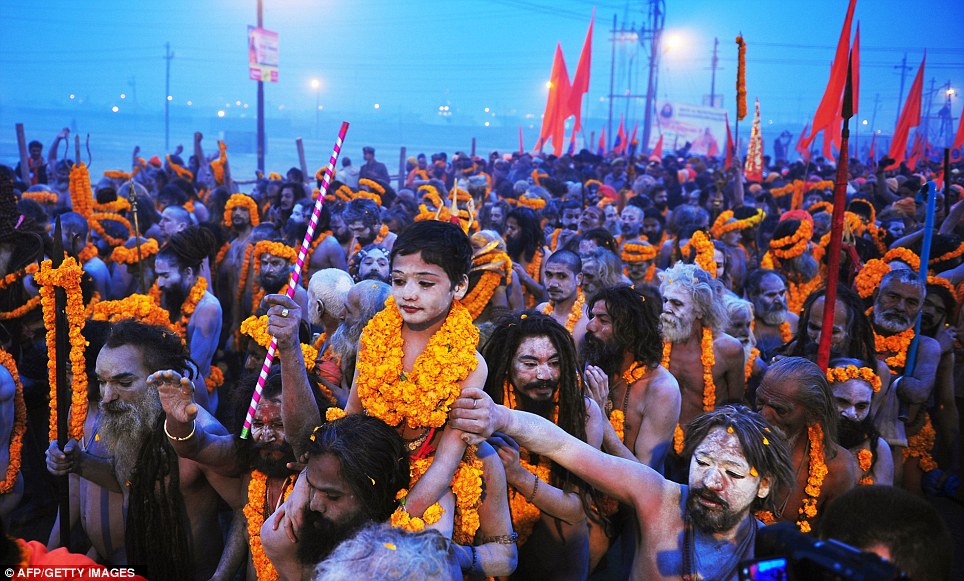 Now-a-days the towns also celebrate a "Half Kumbh Mela" - an Ardh Kumbh Mela - at 6-year intervals.
Now-a-days the towns also celebrate a "Half Kumbh Mela" - an Ardh Kumbh Mela - at 6-year intervals.
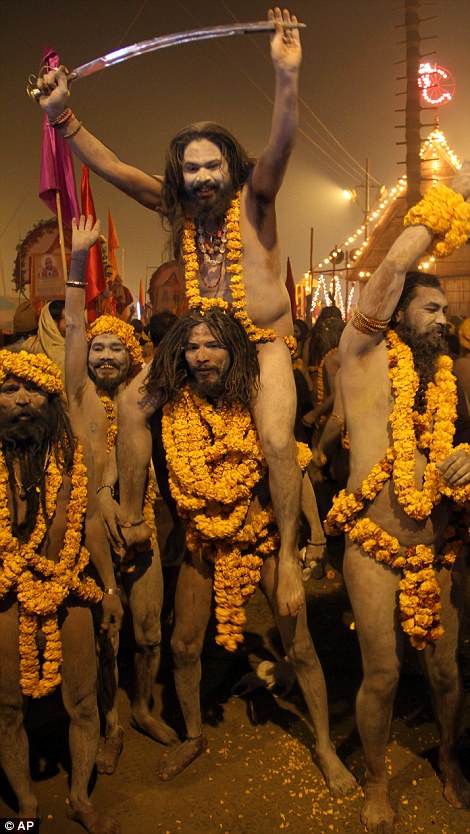 The Kumbh Mela was originally organized and controlled by the akharas (groups of sadhus), who collected taxes, acted as police, took part in trade, and often fought one another. In 1760 (Haridwar), 1789 (Nashik) and 1796 (Haridwar) there were massacres in which it is claimed that thousands were killed. In 1804 the British East India Company (a trading organization, but in control of much of India) took control and the military power of the sadhus was curtailed. The Kumbh Mela is now administered by the government of India.
The Kumbh Mela was originally organized and controlled by the akharas (groups of sadhus), who collected taxes, acted as police, took part in trade, and often fought one another. In 1760 (Haridwar), 1789 (Nashik) and 1796 (Haridwar) there were massacres in which it is claimed that thousands were killed. In 1804 the British East India Company (a trading organization, but in control of much of India) took control and the military power of the sadhus was curtailed. The Kumbh Mela is now administered by the government of India.
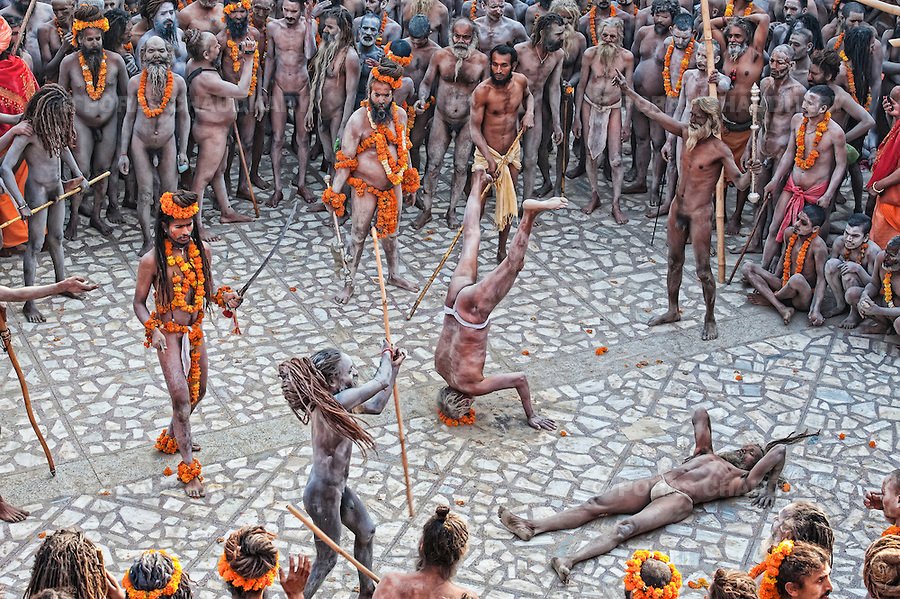 During the festival there are processions of akharas who arrive to take part in religious debates, hold assemblies to discuss and formulate doctrine, meet for group worship and singing, take part in mass feedings of holy men and women and the poor, and perform feats of religious austerity. Many of the sadhus cover themselves with vibhuti ash and use colored markings to denote their membership in an akhara.
During the festival there are processions of akharas who arrive to take part in religious debates, hold assemblies to discuss and formulate doctrine, meet for group worship and singing, take part in mass feedings of holy men and women and the poor, and perform feats of religious austerity. Many of the sadhus cover themselves with vibhuti ash and use colored markings to denote their membership in an akhara.
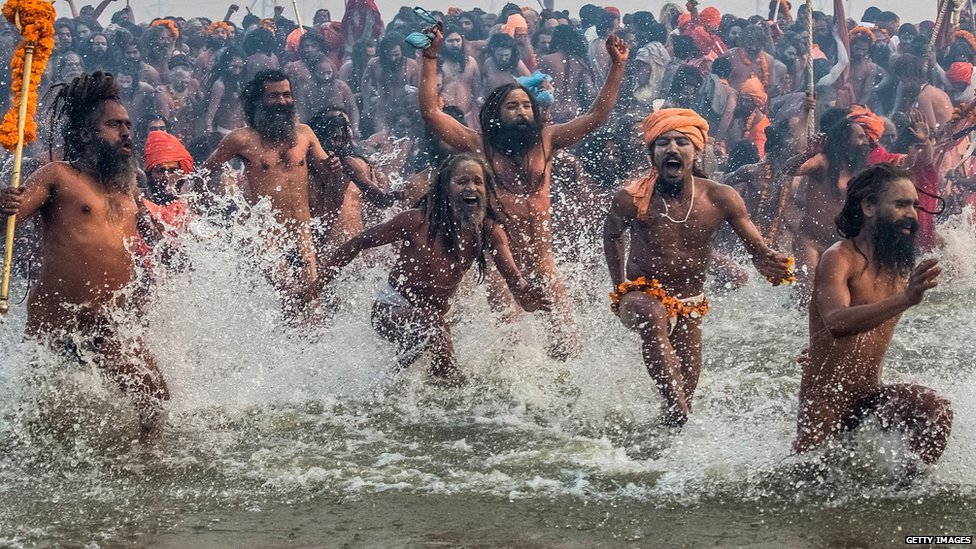 Some of them wear saffron yellow robes; others (the nagas) may be nearly, or completely, naked, except for garlands of yellow flowers.
Some of them wear saffron yellow robes; others (the nagas) may be nearly, or completely, naked, except for garlands of yellow flowers.
The main event of the Festival is ritual bathing in the River - the akharas have their own places on the river banks and enter en masse with great excitement. The sadhus are available for the lay Hindu pilgrims to seek advice and instruction in religious matters, and to participate in darchan - gazing upon a holy place or a holy person brings them closer to the divine.
![]()
The tilaka is the mark worn on the forehead to denote adherence to a particular religious group, or devotion to a particular deity.
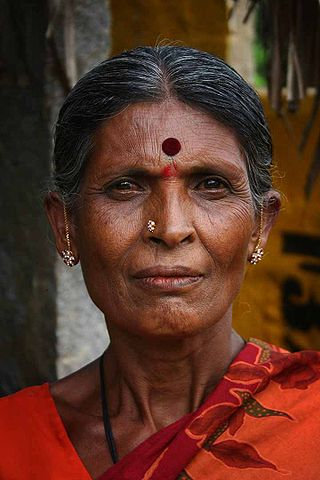 The mark may be of various colors, made with saffron, vermilion, turmeric, clay, or ash (vibhuti). The shape and color indicate the particular devotion - devotees of Vishnu have a U-shaped tilaka, devotees of Shiva have three horizontal lines.
The mark may be of various colors, made with saffron, vermilion, turmeric, clay, or ash (vibhuti). The shape and color indicate the particular devotion - devotees of Vishnu have a U-shaped tilaka, devotees of Shiva have three horizontal lines.
Married women show their status by a similar mark, the bindi, which is a vermilion dot or line on the forehead. A large bindi may be worn by devotees of Durga.
Hindu holy men often cover their bodies with vibhuti - sacred ash - to signify the impermanence of everything.
![]()
Marriage
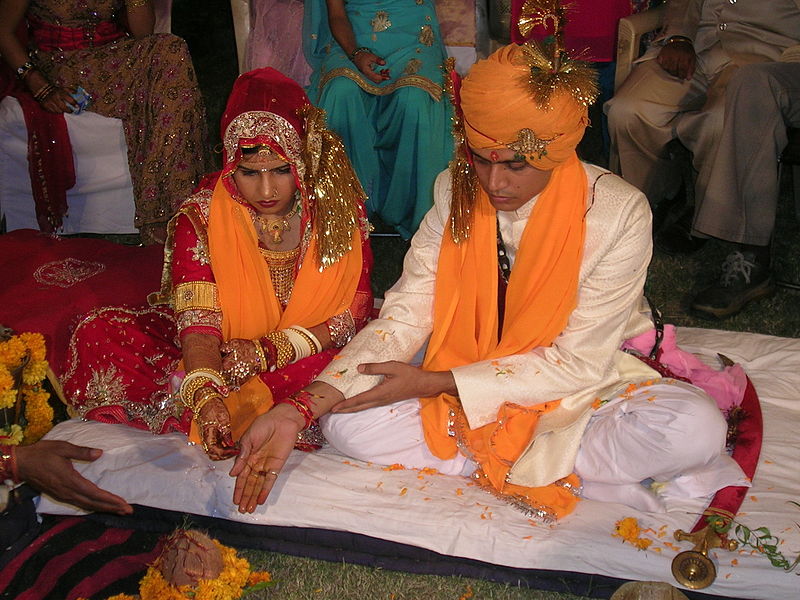 Marriage is still often arranged by the parents of the couple. The wedding ceremony usually takes several days, during which the groom visits the bride's family, and eventually takes her back to his home. The ceremonies vary according to the region, but most will include holding hands before a sacred fire, or taking seven steps (or seven circuits) around a sacred fire while reciting prayers and vows.
Marriage is still often arranged by the parents of the couple. The wedding ceremony usually takes several days, during which the groom visits the bride's family, and eventually takes her back to his home. The ceremonies vary according to the region, but most will include holding hands before a sacred fire, or taking seven steps (or seven circuits) around a sacred fire while reciting prayers and vows.
![]()
Death, Reincarnation and Karma
Hinduism teaches that any attempt to find permanent happiness in this world is maya (illusion). Hindus believe that a person's atman (spirit) is permanent and cannot change, though the physical body is temporary and does change. Hinduism teaches that when people die, the atman will be reincarnated - born as some form of life on earth again. If they have behaved well, the atman will return as a "higher" person. If they have behaved badly, the atman may return in a lower form of life - an animal or insect. The atman is reborn many times, this is samsara (reincarnation). Death happens so that the atman can move nearer the ultimate release from rebirth, moksha (liberation).
The goal of Hinduism is to gain release from the cycle of repeated reincarnation. This may be achieved by the practice of yoga, the adherence to Vedic scriptures, and devotion to a personal teacher or guru.
Hindus who are very old or very ill may decide for themselves that the right time has come for death by choosing to stop eating or drinking. This act of renouncing the world shows that they realize that the world is unimportant. This method of choosing death is often taken as a sign of great holiness.
As a man casts off his worn-out clothes and takes on other new ones, so does the embodied soul cast off his worn-out bodies and enters other new.
Bhagavad Gita 2:22
For sure is the death of all that comes to birth, sure is the birth of all that dies. So in a matter that no one can prevent thou hast no cause to grieve.
Bhagavad Gita 2:27
Coming right nigh to Me, these great of soul, are never born again. For rebirth is full of suffering, knows nothing that abides: free from it now they attain the all-highest prize.
Bhagavad Gita 8:15
The one who tries to escape from the trials of life by committing suicide will suffer even more in the next life.
Yajur Veda 40-43
![]()
Religious groups within Hinduism
Some groups within Hinduism concentrate on just one aspect of the divine, and worship only one of the Hindu gods or goddesses.
Vaishnavism concentrates on Vishnu and his avatars, particularly Rama and Krishna (an avatar is the manifestation of a deity on earth).
Shaivism concentrates on Shiva
Shaktism concentrates on Devi, the Divine Mother figure.
Smartism worships multiple deities.
Charvakas reject all deities.
NOTE - these are all part of mainline Hinduism, and should not be considered as "New Religions" - do not use them for your Final Project.
Members of the Hare Krishna sect believe that Krishna is the single God. The present leader of this sect is Swami Prabhupada.
Copyright © 1999 Shirley J. Rollinson, all Rights Reserved
